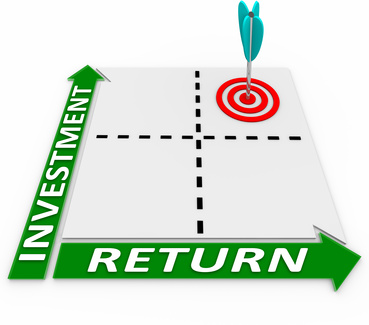A guide to marketing automation
Many businesses shy away from marketing automation because they believe it's too cold, impersonal, and unreliable for their purposes. However,...
4 min read
Inbound 281
October 28, 2025 10:22:00 AM EDT

Smart workflows are the real difference-maker for marketing teams. Optimizing marketing automation workflows helps teams avoid wasted effort and boosts results. You’ll cut manual work, fix gaps that stall growth, and make each touchpoint count.
Marketing automation workflows are like the control center of your campaigns. They connect actions, messages, and data so your marketing runs smoothly even when you’re not watching every step.
A marketing automation workflow is a series of connected steps that move leads or customers toward a goal. Each workflow is powered by triggers, actions, and rules that decide who gets what, and when.
Key components include:
Triggers: Events that start the workflow, like a new sign-up or an abandoned cart.
Actions: What happens next, such as sending an email, assigning a lead to sales, or tagging a contact.
Conditions/Rules: Built-in checks that decide which path someone follows. For example, “Did the contact open the last email?”
Delays/Timing: Wait times between actions to keep outreach from feeling rushed or robotic.
Goals: The outcome you want, like converting a lead to a customer or getting feedback after a purchase.
Marketers use different types of workflows based on goals, audience, and timing. Here are the most common types, plus examples:
Email Sequences:
Used for welcome series, product launches, or event reminders.
Example: A new subscriber gets a welcome email, followed by a product overview, then a special offer over a few days.
Lead Nurturing:
Guides prospects from interest to decision with helpful information at each stage.
Example: Someone downloads a guide. Over a week, they get case studies, testimonials, and finally a call to book a demo.
Customer Onboarding:
Helps new customers get started and stay engaged.
Example: After a purchase, a customer receives setup tips, how-to videos, and check-ins.
Behavior-Triggered Actions:
Responds to user actions like downloading an ebook, clicking a link, or visiting specific webpages.
Example: If a lead visits a pricing page but doesn’t buy, they get a follow-up email with FAQs.
Optimizing marketing automation workflows pays off in many ways. You don’t just move faster; customers feel your personal touch, and deals close with less friction.
Optimized workflows help teams cut out repetitive tasks and manual data entry. Instead of chasing down leads or piecing together campaign results, automation does the heavy lifting.
Faster campaigns: With fewer steps to handle, your team can launch new campaigns in days, not weeks.
Fewer errors: When you remove manual updates, you avoid embarrassing mistakes like duplicate messages or missed leads.
Better focus: By letting automation handle the routine, your team stays focused on creative, high-value projects.
A customer who feels seen is a customer who comes back. Optimized marketing automation workflows use data to tailor messages to each person’s needs, stage, and behavior.
Right place, right time: Automated triggers react instantly when someone takes action, so no one is left waiting.
Personal touches: Dynamic content and smart segmentation mean emails mention a customer’s name, preferred products, or location.
Consistent communication: Well-planned workflows guide people smoothly from first touch to long-term loyalty.
This type of personalization builds trust and keeps your brand top of mind. Instead of generic blasts, every message feels like it was written just for the recipient.
Optimized automation drives conversions and sales by targeting the right people with the right message at the perfect moment.
Better-qualified leads: Lead scoring and nurture tracks push the most interested contacts to sales, so you waste less time on bad fits.
Fewer missed opportunities: Automated follow-ups catch leads before they cool off, raising your chances of closing each deal.
Upsell and retention: Smart workflows don’t just stop after a sale; they keep reaching out with cross-sells, reorders, and feedback requests.
Small changes can unlock better results across your marketing. The right approach comes down to getting personal, understanding your data, and building smarter journeys. Below are practical strategies to streamline and sharpen your efforts.
Before you automate, you need to know how people move from stranger to loyal customer. Mapping out the full path helps you spot gaps and improve every touchpoint.
Identify key stages: Start with big milestones, like awareness, consideration, and purchase. Break these down into smaller steps, such as reading a blog post or signing up for a webinar.
Pinpoint key actions: List what people do at each stage. This could include opening an email, clicking a link, filling out a form, or asking for a quote.
Spot your bottlenecks: Look for spots where leads drop off or get stuck. These are perfect moments to use automation to re-engage or nudge them forward.
When it comes to optimizing marketing automation workflows, personalization is key. The more personal your marketing, the more effective it becomes. Segmentation helps you send messages that matter to each group, not just everyone on your list.
Go beyond basics: Don’t just segment by age or location. Use behavior like recent purchases, website visits, repeat engagement, or inactivity.
Create dynamic segments: Set up lists that update automatically based on actions users take, so your messaging stays current.
Test and refine: Try different segments and measure results. You might find that surprising groups respond best to certain offers.
Your automation gets smarter as you collect data. Use these insights to sharpen every workflow and lift results.
Track open and click rates: See which emails people open and which links they click most. Use this data to shape future messages.
Monitor drop-off points: If leads stop engaging at the same spot, rethink your timing or content. Maybe your sequence is too fast, or messages need tweaking.
Use goal tracking: Set up conversion goals for key steps in your workflows. See which workflows bring new customers and which need more work.
Optimizing your marketing automation workflows keeps your team sharp and your messages on point. Small changes now can save time, lift engagement, and grow revenue later.
At Inbound 281, we can help you design and implement marketing automation workflows that save time, increase efficiency, and drive better results. Whether you're nurturing leads, onboarding new customers, or re-engaging inactive contacts, our team builds customized workflows tailored to your goals and audience. Contact us today to learn how we can streamline your marketing processes, or schedule a meeting with our advisor to get started.

Many businesses shy away from marketing automation because they believe it's too cold, impersonal, and unreliable for their purposes. However,...

Gone are the days when you have to sacrifice quality for quantity within your innovative marketing mix. With the help of marketing automation, now...

One of the most challenging things about digital marketing is its sheer number of moving parts. Considering the myriad of tasks a digital marketer...